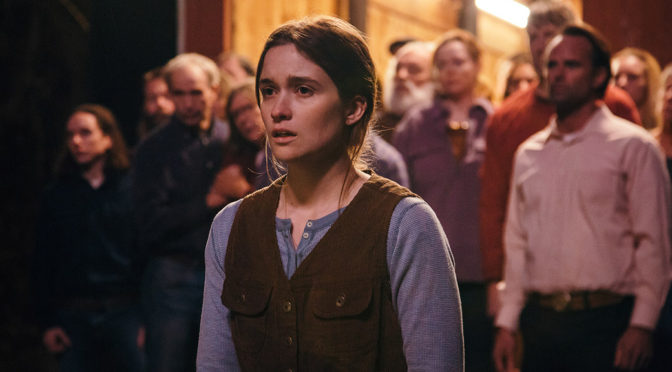 THEM THAT FOLLOW – from directors Brittany Poulton and Dan Madison Savage – follows the story of Dilly (Kaitlyn Dever) and her relationship with Augie (Thomas Mann). In their rural community in Appalachia, everyone is a member of a snake-obsessed religious cult. Dilly’s father, Lemuel (Walton Goggins) is the zealous vicar of this church and Hope (Olivia Colman), Augie’s mother, is a devout believer. Chaos breaks out due to the forbidden relationship between Dilly and Augie which causes the religion to reveal its dark, ugly traditions.
THEM THAT FOLLOW – from directors Brittany Poulton and Dan Madison Savage – follows the story of Dilly (Kaitlyn Dever) and her relationship with Augie (Thomas Mann). In their rural community in Appalachia, everyone is a member of a snake-obsessed religious cult. Dilly’s father, Lemuel (Walton Goggins) is the zealous vicar of this church and Hope (Olivia Colman), Augie’s mother, is a devout believer. Chaos breaks out due to the forbidden relationship between Dilly and Augie which causes the religion to reveal its dark, ugly traditions.
THEM THAT FOLLOW boasts a star-studded cast. Olivia Colman’s performance is a masterclass and, although she is a side character within the story, she really stands out. The crisis of faith expressed through her acting is phenomenal, with doubtful looks and falters in her voice. Walton Goggins also excels playing the fervent leader. His performance sometimes turns into melodrama but it fits the character’s zealous nature perfectly. Additionally, he adds a complexity to the character’s personality; not only is he a mad cult leader but he is also a caring father and it’s clear he simply believes what he is doing is the right thing for his daughter. A great deal of the credit must go to Poulton and Savage for their brilliant direction, but these two stars really brought their characters to life.
Additionally, the performance of Kaitlyn Dever was fantastic. Even though she is the protagonist, it’s easy to find her boring and dull at first, although this is perhaps intended as a result of the terrible brainwashing she has undergone. Additionally, in this society, she is supposed to be subservient to men. However, as the film progresses, she breaks free of her religious constraints and becomes equal; all of which is communicated fantastically by Dever. Lewis Pullman supports ably as Garret and really shows how someone who is initially innocent can be sucked in by the fervour of the cult and turn into someone disgusting.
The film is primarily a character study, but it does tackle some very interesting allegories and themes. As previously mentioned, the central religion has an obsession with snakes, specifically poisonous and venomous snakes. In the Bible, the snake is a representation of Satan, as he seduced Eve into biting the apple. However, in this religion, they seem almost revered. In a particular scene, someone has a snake smother them in order to find if the devil is a part of them. If the snake does not attack then God has given them mercy. If they do, then God decides you are a sinner and unworthy. If so, does God control the snakes? Instead, the more direct comparison is that God protects you from the snake’s bite if you are truly devout. This seems to be the apparent interpretation, but the dialogue spoken between characters makes this a little confusing.
In terms of craft, this film is not particularly notable. The occasional landscape shot doesn’t boast bold views and, with the advantage of this fantastic setting never utilised, this seems a shame. This may be to retain a focus on the characters, but with a film with such bold ideas on religion and cult-like mentality, there could have been a lot more interesting scenarios and allegories. As a result, although a fantastic film, THEM THAT FOLLOW fails to truly reach its highest point in terms of theme and craft.

